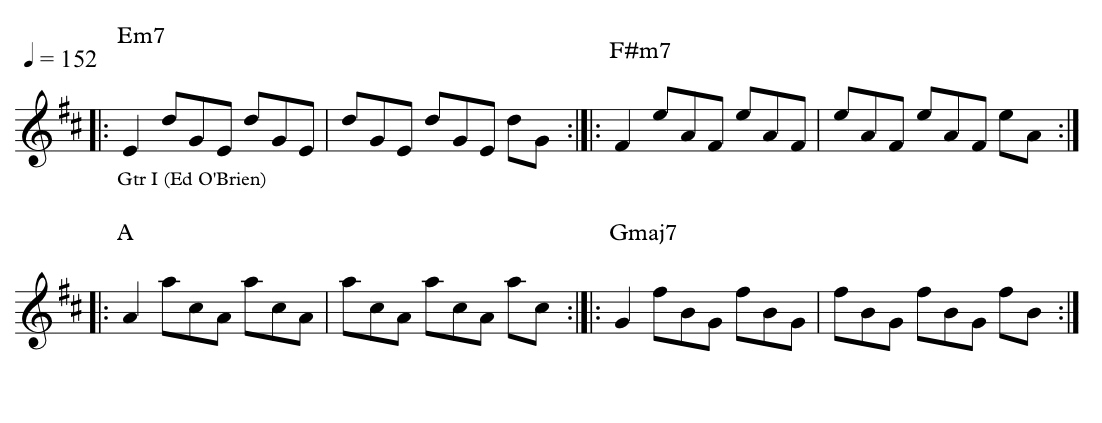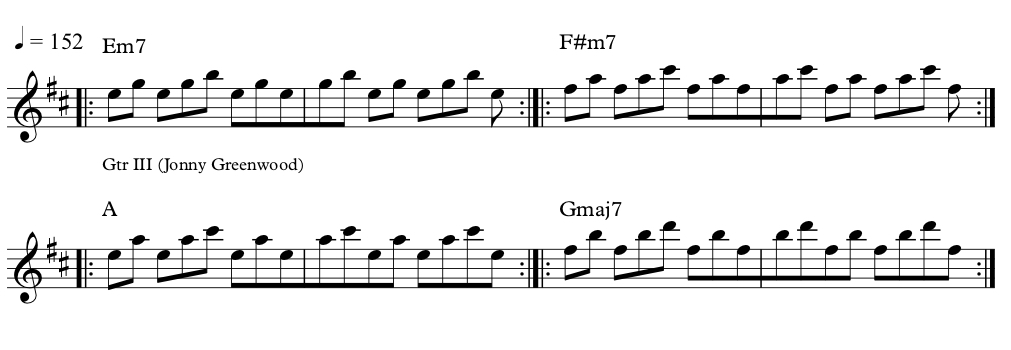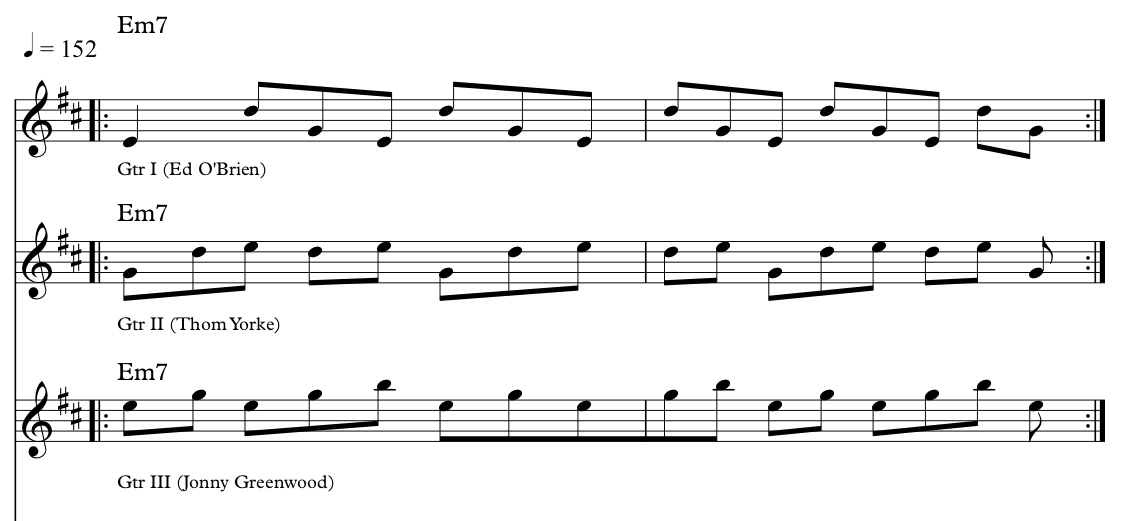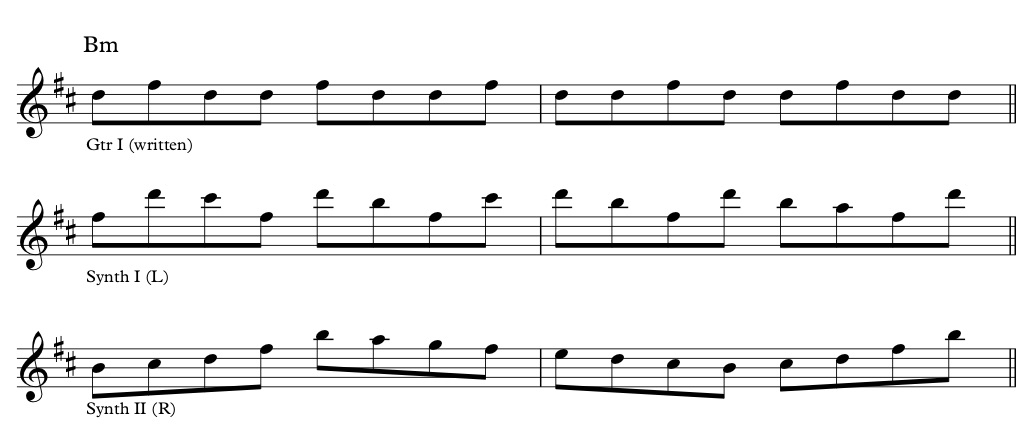Harmonic Analysis of Radiohead’s “Weird Fishes/Arpeggi”
In this detailed harmonic analysis, Filippo Faustini breaks down Radiohead’s 2007 track “Weird Fishes/Arpeggi” as well as comparing the original arrangement to one by British singer/songwriter Lianne La Havas.
Guest post by Filippo Faustini of Soundfly’s Flypaper
In this article, we will take a very close look at the arrangement of a fascinating song by Radiohead, “Weird Fishes/Arpeggi,” included on their seventh studio album, In Rainbows (2007).
We will also compare the arrangement of this particular song to Lianne La Havas’ beautiful cover version included in her homonymous album released earlier this year. The British singer and songwriter had performed the song live at Glastonbury in 2013 and then went in studio to record her version. After the experience, she decided to record a full album with the same general vibe and this is actually how her most recent album came to be.
But let’s rewind the tape back to 2007. Here’s the original.
+ Learn more on Soundfly: Write more interesting pieces of music by better understanding the foundational elements of composition with our Introduction to the Composer’s Craft course.
Breaking Down Radiohead’s Arrangement
The track starts with a solid drum groove, which will stay the same throughout most of the song. This choice is quite interesting since it implies that the drums will not signal the subdivision of the arrangement in sections, as is usually how drum arrangements function in pop music.
Alternatively, the way Radiohead create momentum is done in a textural way: the density of the arrangement increases with the addition of several layers which form an interesting rhythmical and contrapuntal effect. This is evident in the guitar parts especially; we’ll break those down here.
The first guitar arpeggio (the plural of which gives the song its title) is played by Ed O’Brien and it follows as such (written an octave higher than played):

The guitar lays out the harmony of the first part of the song, and it’s playing two shell voicings — root, third, and seventh — of the chords Em7 and F#m7. It then develops into A and Gmaj 7, again in the form of a shell voicing.
On the fourth chord in the progression, Gmaj7, a second guitar (in live versions, this is played by Thom Yorke) superimposes another arpeggio onto the one we just heard. The overall harmony results in a G6maj7. This is a possible transcription of this new arpeggio:

This second, complementary arpeggio is basically an inversion of the chords played by Gtr I, but with the accents being shifted in a different way (more on this later).
Yorke’s vocals come in with a reverb effect on the last syllable of each line, with a long pre-delay time that helps the high-end cut through the mix as if it’s yet another instrument in the arrangement.
A third arpeggio, played by Jonny Greenwood, is added to the texture at 1:48 and follows the same principle of the other two, being formed of inversions of the same chord progression:

Please note that in all these transcriptions, I have deliberately grouped the stems by accent where possible, so that the layering of different accents becomes more evident.
This is more apparent if we take a look at all the arpeggi at once; so here’s a sample of the first four bars below. And since these are unevenly placed, it forms a shimmeringeffect:

This is such an interesting way to layer different parts with similar timbres — this layering method reminds me of some minimalist works by Steve Reich and Terry Riley, where repetitions and arpeggiations may slowly phase away from each other to give an auditory effect or elevate the presence of harmonics for example.
This patterning of accents is also something that happens across various global music traditions in different ways, such as Balinese Gamelan music, Moroccan Gnawa, or Indian Classical music.
The accents are here summarized (counted in eighth notes over 4-bar patterns, or patterns of 32 notes):
- Gtr I (O’Brien): 233332 233332
- Gtr II (Yorke): 323232 323232*
- Gtr III (Greenwood): 232323 2323232*
*To make these patterns of accents fit into four bars, two eighth notes are added at the end of each two-bar cycle (or one chord) in Gtrs II and III. It is a simple alternation of accents every combination of two or three eighth notes.
I want to go even a step further and collapse these parts onto one single staff, to see what kind of harmonic colors are highlighted by this game of accents. If we consider that each group of two or three eighth notes starts with an accent, we will end up with the following effect, transcribed:

I have transcribed the notes which result by an accent with a diamond head, above. The notes on the first downbeat are all naturally accented, but in other parts of the bar only some of them are.
This “shimmering” effect is enhanced by the placement of these guitars in the stereo field and involves the notes E, G, and D. These notes spell out the notes of the chord at random points in the bar, evoking the feeling of “Em7-ness” in the air. This happens for all the four chords in the progression. It feels like being immersed inside these harmonies, where the notes of the chord reach our ears randomly and from different positions in the stereo field.

In my opinion, this effect adds another dimension to the guitar arrangement. Not only does it add texture and increase momentum and dynamics, but it does so by replacing the static nature of single chords with the layered and flowing effect of arpeggios happening simultaneously.
There’s a feeling of randomness superimposed over precise rhythmic schemes. Whether this is intentional or the result of intuition is not the point of our discussion, the creative possibilities that stem from this approach are rather the point.
And this “random” effect is intensified later on, at 2:37, when another layer is added on top of everything. This layer sounds like a resample of one of the arpeggi which is then sped up or a new arpeggio with a different irregular grouping, also sampled. It is possible that Greenwood is using a Max MSP patch to create this polyrhythmic effect.
I have transcribed a hypothetical notation of this part here:

The bass work is also worth mentioning. Colin Greenwood is in my opinion a master of economy in the bass lines provide evidence to that in this song. Please have a listen to how the bass lines support the music both rhythmically and harmonically at the beginning of each cycle, grounding the arpeggi and delimitating the chord changes.
After this last guitar layer (Gtr IV), the arrangement suddenly empties out on the lyrical line: “I get eaten by the worms,” leaving only one guitar arpeggio and a couple of synths hard-panned and with a pretty low cutoff point which mimics the sensation of being underwater very effectively.
The guitar and synths are arranged in this way:

If we take a look at the groupings of notes, you’ll notice that the parts are made of ostinati, similarly to the way the arpeggi have been built so far.
Gtr I is made of cells of three eighth notes, Synth I repeats itself every 14 eighth notes and Synth II every 11 eighth notes. Again, this can either be a deliberate choice or the result of experimentation — and I suppose only the guys in the band could confirm either way — but it’s an interesting development from the initial layering concept nonetheless.
The ending of the song is climactic and sustained by a slight variation of the initial drum groove. This interlocks with an ostinato played by the bass. The song evolves in a crescendo in dynamics and in the number of parts which are layered subsequently. O’Brien now plays long notes with sustain.
The parts become here less definite than in the beginning, meaning that they’re mainly highly effected sounds and sampled parts. The song ends with a sudden halt, what I imagine visually as water disappearing quickly through a plughole.
Some Changes in Lianne La Havas’ Arrangement

If we compare the original version to La Havas’ cover (below), we immediately notice how the arrangement has been transformed, quite radically, due to the lack of counterpoint against the original arpeggiated line and its instrumentation. However, La Havas’ version well retains, if not enhances, the song’s original intimate vibe.
Let’s listen now.
Radiohead’s original drum groove, quoted at the start of the cover, has changed dramatically. Notice how the feel of the tempo has relaxed, simply by doubling the rhythmical value of the hi-hat and kick parts (from eighth notes to quarter notes). And, thinking more granularly about the rhythm, the snare placement on beat 3, instead of 2 and 4, contributes to the change in musical style and mood.
The propulsive arpeggi have been shunned and replaced by a minimal Wurlitzer piano arrangement. This exposes La Havas’ beautifully sung vocals, exceptionally warm and intimate. In the middle section, the background vocals are now joining in a delicate block chords vocal arrangement. And finally, the climactic moment of the coda is maintained with the layering of a distorted electric guitar, La Havas’ voice, which is now sung at the octave, and the background vocals.
Conclusions
To sum up, I wanted to focus on the arrangement of Radiohead’s “Weird Fishes / Arpeggi” because it shows a peculiar way to arrange a song that provides interesting results, propelling the musical “storytelling” forward with intricate tapestries of rhythms and creative combinations of accents.
The focus on layering complementary rhythms in this way to enhance the form of a song adds quite a vast array of possibilities to the producer’s toolbox.